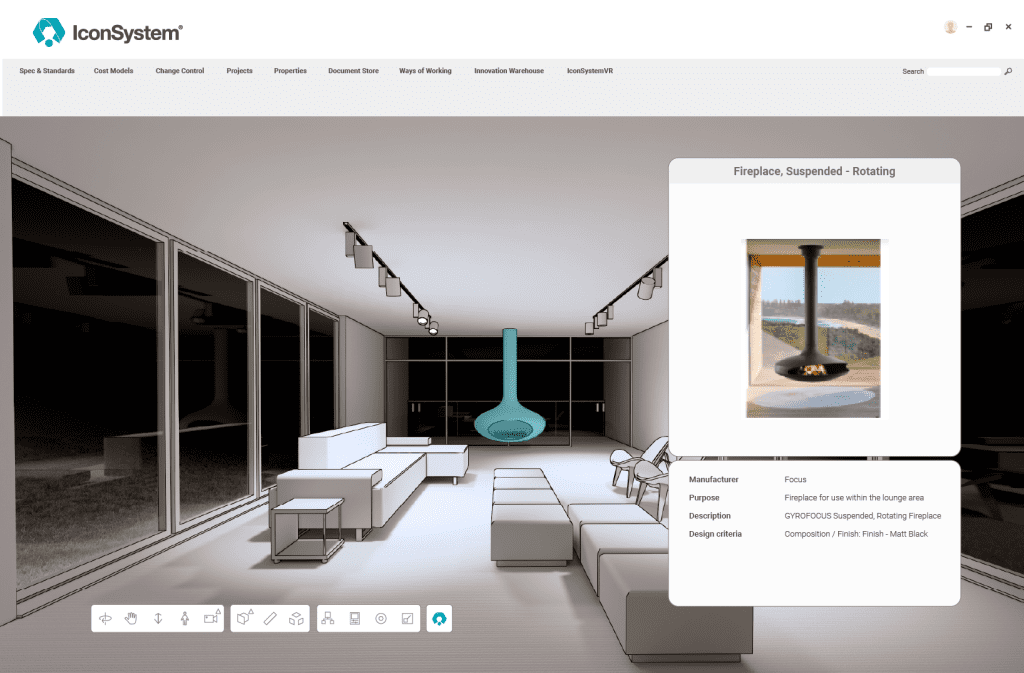The construction industry is in the eye of a perfect storm. A major skills shortage, an ageing workforce and economic uncertainty are making it harder to run profitable projects.
But rather than letting these obstacles rain on their parade, building companies are ready to face today’s challenges head-on. And digital transformation is providing a much-needed solution.
Technology is opening new doors for digital collaboration, creating more effective ways to share data, drive progress and save time and resources.
Why is digital transformation such a game-changer in the current climate? And how can it deliver a bright future for building project management? Let’s take a deeper dive…

Grey clouds loom over construction’s sunny forecast
While UK construction output is forecast to grow by 2.2% this year, multiple forces are battering profitability. Project leaders are navigating difficult and complex challenges, including:
- Recruitment pipeline: the construction workforce is ageing, and there isn’t a strong enough pipeline to replace retirees. In addition, UK building companies have lost valuable labour sources due to Brexit. As a result, an extra 266,000 workers will be needed by 2026 to keep pace with UK building demands, according to Construction Skills Network.
- Skills shortages: recruitment is not just a numbers challenge; there’s a skills shortage to address as well. 58% of construction companies cannot find people with the skills they need, with electricians, bricklayers and plumbers the most difficult trades to source.
- Economic uncertainty: the price of building materials has risen by 25% in the last year alone, while labour shortages are pushing up contractor charges. These cost increases make it difficult for building companies to plan and execute profitable projects.
With these grey clouds looming, doing nothing is not an option. In January 2023 alone, 15 UK building companies went into administration. Surviving construction’s perfect storm means investing in new solutions to overcome sector shortages and offset rising costs.
Using technology to tackle the storm
Digital transformation is helping construction companies overcome adverse industry conditions. 66% of building firms have already digitised some of their cost estimation, prediction, planning and control processes, according to RICS. But more significantly, 60% are using digitised techniques to implement whole-of-life thinking.
Digital transformation isn’t just changing practices; it’s revolutionising approaches. For example, construction companies are using cutting-edge technologies such as information management software to improve collaboration and streamline ways of working.
By managing people’s time more efficiently and combining skills and expertise, building firms are offsetting the impact of recruitment challenges and rising contractor costs.
A single source of truth for all stakeholders
Let’s take a closer look at how information management software can help companies to improve collaboration and tackle construction’s perfect storm.
An information management solution allows building firms to communicate specifications and standards for every project. All programme data is stored on a single platform so stakeholders can easily access drawings, specifications, schedules and budgets.
Centralising project data prevents delays, as each person has the digital documentation they need to get on with their job. More importantly, establishing a common data environment means all updates are made in the same place. As a result, project leaders can maintain a single source of truth, and project documentation is no longer affected by version control issues.
Why is this important to address industry challenges? Construction companies may need to work with contractors they’ve never used, or invest in entry-level talent. Clear specifications and standards ensure new recruits have accurate information to work from. And linking design and build teams enables the initial project vision to be executed correctly.
Information management software also streamlines workflows so teams can spend more time on strategic activities. Project managers can minimise the number of people involved without compromising on quality – and working with a smaller team can offset the rising cost of building materials.
Enabling on-site updates
It’s not just the capabilities of information management software that improve collaboration, either. The format in which data is delivered drives close-knit working.
Rather than waiting for weekly progress meetings, construction teams can use cloud-based collaboration software to respond to changing requirements in real-time. Solutions can be workshopped virtually, with design and build teams making joint decisions on how best to proceed. This rapid response prevents schedule and budget overruns, which is particularly important when contractor availability is limited.
The most effective information management solutions can also integrate with other construction software to further optimise decisions, manage costs and improve project outcomes.
Specialist software can deliver a bright future
Building companies are open to improving collaboration using cutting-edge technology. But some fall into the trap of believing that generic project management software will ‘get the job done’.
Digital transformation is not a mission to find the broadest solution; it’s an opportunity to optimise every business area using specialist technology. Choice of software will make a huge difference to how construction companies weather industry storms.
Investing in construction information management technology like Elecosoft’s IconSystem will be critical to shaping the built environment and helping firms to mitigate the impact of internal and external challenges. It’s the cornerstone of clear communication and collaboration.
With people and skills in short supply, and project costs continuing to rise, construction leaders need to equip their teams with the necessary tools to work together efficiently. The common data environment provided by information management software is essential to running collaborative construction projects that deliver outstanding results.
Building, Design & Construction Magazine | The Choice of Industry Professionals




